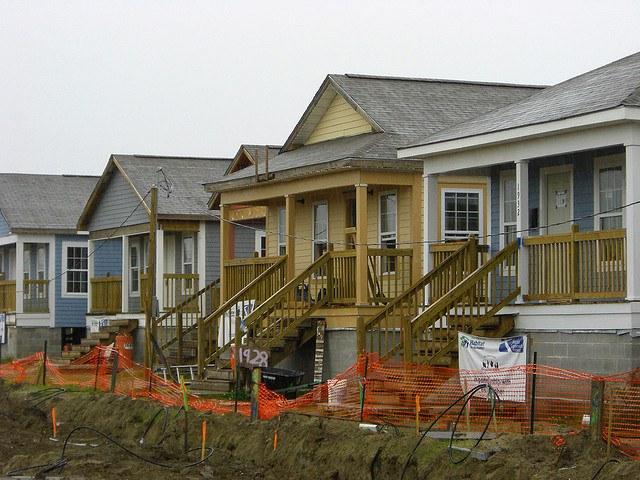
Editor’s Note: This article originally appeared in the August issue of Green Money Journal. Check out more excerpts here.
By Jason Campbell
At a recent SRI Conference, I joined a community investing project tour of the Lower 9th Ward in New Orleans, which was completely devastated by Hurricane Katrina in 2005. The Make it Right Foundation (started by Brad Pitt in 2007) was working to help rebuild using the highest standards of green and sustainable building, along with guiding principles defined by the local community.
During the tour, I saw how this collaboration was helping a distressed community. It crossed my mind that a similar project might work on American Indian reservations.
Tom Darden, executive director of Make It Right, attended the SRI Conference, where he was kind enough to let me share with him the parallels I saw between the disaster of Hurricane Katrina and the economic disaster areas where many tribal reservations are located in the United States. My question for Tom and Make It Right was whether they would share their innovative model -- a community-driven approach to socially responsible and sustainable neighborhood development -- with Native Tribes and reservations in dire need. They said "yes," and we started with the Fort Peck Reservation in Montana.
Through a process employing extensive collaboration between the tribes of the Fort Peck Indian Reservation’s leadership, tribal citizens and with Make it Right Foundation, there will be 20 families living in LEED Platinum homes (funded through a low-income housing tax credit) in the fall of 2015. (Check out this USA Today article on the homes.) This is step one of a much larger nation-building vision driven by core principles generated by tribal citizens of the reservation.
Before I approached Make It Right at the SRI Conference, I inquired of Steven Heim, steering committee member of U.S. SIF’s Indigenous Peoples’ Working Group and director of ESG research and shareowner engagement at Boston Common Asset Management, about how I could better understand sustainable, responsible and impact investing particularly on the institutional side. This would be increasingly important to understand due to the work I was starting to do with tribes.
During my time with Boston Common, my sister sent me an article from my local Spokane, Washington, newspaper. A Spokane tribal citizen was on the front page of a multi-page article outlining the horrific impacts of a legacy uranium mine on the Spokane Indian Reservation.
Back in the late 1950s, a unit of Newmont Mining led the Spokane Tribe to believe that extracting uranium in support of the Cold War would create desperately needed jobs and be totally safe. Newmont used the tribe as a disposable workforce that is feeling the adverse effects even today. Newmont also never bothered to clean up the mine site that went dormant in the 1980s and is now a $200 million EPA superfund site. The resulting contamination includes high cancer rates and other diseases, contamination of water, sacred sites, medicinal plant gathering sites, and elk calving grounds.
Image credits: 1) Flickr/Aaron Gustafson 2) Jason Campbell
Article by Jason Campbell. Jason’s organization, Areté Development Group, was launched after graduating with an MBA from Gonzaga University. Areté Development Group focuses on serving American Indian sovereignty by building connected self-sustaining communities. Through culturally based policy development woven with cutting edge practices and strategic partners, Areté Development Group strives to contribute to a quality of life for citizens of Native nations that reflects the core values of individual Tribes. The development of sustainable capacity building opportunities, of which, socially responsible investing of financial assets is a part, represents the historic cultural values of stewardship and generosity.
TriplePundit has published articles from over 1000 contributors. If you'd like to be a guest author, please get in touch!














